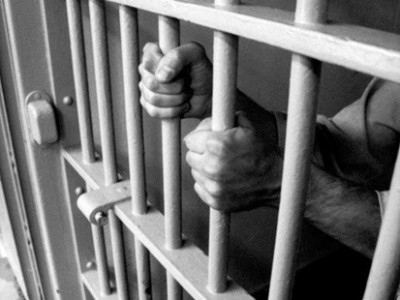New York Governor Andrew Cuomo Implicated in Torture by State Prison Officials

An investigation published Tuesday in the New York Times revealed that prison guards at the Clinton Correctional Facility in Dannemora, New York systematically beat and tortured dozens of prisoners in June of this year.
The Times report also notes that New York Governor Andrew Cuomo questioned a prisoner only hours before he was tortured. According to letters from prisoners obtained by the Times, guards rammed inmates’ heads against walls, hanged one from a pipe with a plastic bag, and threatened to waterboard and kill another.
Conditions in American prisons increasingly resemble those in the torture chambers of Abu Ghraib and Guantanamo Bay, where prisoners have been shackled, strung from ceilings, waterboarded, beaten and sexually humiliated. After fifteen years of the “war on terror,” the barbaric torture methods previously inflicted on the populations of Iraq and Afghanistan are becoming increasingly commonplace at home.
The beatings and torture came in the immediate aftermath of the escape by prisoners Richard Matt and David Sweat from the Clinton facility in early June. Matt and Sweat had used hacksaws to cut their way out of the maximum security state prison while the guards on patrol slept.
In the aftermath of the escape, police orchestrated a violent wave of retribution on other prisoners despite the fact that it was the guards—not the prisoners—who aided in their get-away. Police carried out a manhunt and shot both prisoners, killing Matt and wounding Sweat three weeks later.
The Times report indicates that the collective punishment carried out by the guards followed direct threats made by Cuomo, who visited the prison just hours before inmates were tortured.
According to the Times, Governor Cuomo asked prisoner Patrick Alexander if the escape by the two inmates “must have kept you awake with all that cutting, huh?” Alexander explains that this threat was accompanied by Cuomo’s “best tough-guy stare.” Only hours after Cuomo and his media accompaniment left, Alexander was brutally beaten.
Cuomo’s visit, his threats, and the beatings that followed point to his direct involvement in orchestrating the criminal violence. The fact that he would make such threats on video underscores the degree to which the forces of the American state—from police officers and prison guards up to the governor and the president—carry out the violent repression of the population brazenly and with self-assumed impunity.
Alexander told the Times that three guards without name badges took him from his cell, handcuffed him, and placed him in a broom closet.
A guard threateningly asked him, “Do you know the difference between this interview and those other interviews?” The difference, Alexander was told, was that this time he was all alone: no defense attorney, no video cameras—just a handcuffed prisoner and the guards.
Alexander explained what happened next:
“The officer jumps up and grabs me by my throat, lifts me out of the chair, slams my head into the pipe along the wall. Then he starts punching me in the face. The other two get up and start hitting me also in the ribs and stomach. The whole time he’s holding me up by my throat.”
Alexander said that a guard then “pointed to a plastic bag hanging on some pipes, asked if I knew what it was for, and said ‘You know what waterboarding is?’” The inmate said that prison guards destroyed his diaries, family photos, and, as the article puts it, “a decade’s worth of letters from his mother and aunt that he had laminated with packing tape for safekeeping.”
Over sixty New York prisoners have filed complaints detailing similar attacks by prison guards. On one occasion, guards forced prisoners to line up in a row and then proceeded to beat them where they stood.
Another prisoner, Victor Aponte, explained that a prison guard with an American flag tattoo nicknamed “Captain America” beat him and tied a plastic bag around his face until he passed out. Guards then placed Aponte in solitary confinement for three weeks and threw out his family photographs and wedding ring.
In addition, prisoners were forced to sign affidavits denying that they had been beaten. As Aponte told the Times,
“the sergeant tells me I’ve been in prison for long time and I should know better, that if I didn’t tell the nurse that was going to examine me that nothing has happened that they were going to kill me for real this time.”
Manuel Nuñes, also interned at Clinton Correctional Facility, told the Timesthat he was beaten by New York correctional officers while being transferred to another prison. Guards “rushed into my cell, threw me down on the bed, twisted my wrist and yelled at me not to resist,” he said, adding that guards “assaulted me while I was cuffed, chained, and shackled.”
The brutality unleashed at Clinton Correctional Facility is a particularly egregious, but by no means unique, example of the treatment of prisoners in the American prison system. Forty four years after New York prison guards killed 33 prisoners in the Attica prison uprising of September 1971 the millions locked-up in American prisons still face conditions of Dickensian cruelty.
It was a stay in another New York prison on Rikers Island that led 22-year-old Kalief Browder to kill himself on June 6—the same day the torture campaign at Clinton commenced. Browder had been held for three years without having been convicted of a crime. According to a government tally, over two million people were locked-up in American prisons in 2011, with an additional five million on probation or parole.
Indeed, the brutality of the guards in upstate New York, with the direct involvement of the governor, is yet another expression of the degree to which violence, brutality, and murder have become the common currency of the American ruling class. After fifteen years of the war on terror, the types of crimes committed by the US war machine abroad are being brought home.

